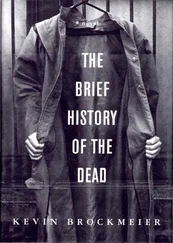What’s So Good About Men?
At least since the Agricultural Revolution, most human societies have been patriarchal societies that valued men more highly than women. No matter how a society defined ‘man’ and ‘woman’, to be a man was always better. Patriarchal societies educate men to think and act in a masculine way and women to think and act in a feminine way, punishing anyone who dares cross those boundaries. Yet they do not equally reward those who conform. Qualities considered masculine are more valued than those considered feminine, and members of a society who personify the feminine ideal get less than those who exemplify the masculine ideal. Fewer resources are invested in the health and education of women; they have fewer economic opportunities, less political power, and less freedom of movement. Gender is a race in which some of the runners compete only for the bronze medal.
True, a handful of women have made it to the alpha position, such as Cleopatra of Egypt, Empress Wu Zetian of China ( c . AD 700) and Elizabeth I of England. Yet they are the exceptions that prove the rule. Throughout Elizabeth’s forty-five-year reign, all Members of Parliament were men, all officers in the Royal Navy and army were men, all judges and lawyers were men, all bishops and archbishops were men, all theologians and priests were men, all doctors and surgeons were men, all students and professors in all universities and colleges were men, all mayors and sheriffs were men, and almost all the writers, architects, poets, philosophers, painters, musicians and scientists were men.
Patriarchy has been the norm in almost all agricultural and industrial societies. It has tenaciously weathered political upheavals, social revolutions and economic transformations. Egypt, for example, was conquered numerous times over the centuries. Assyrians, Persians, Macedonians, Romans, Arabs, Mameluks, Turks and British occupied it – and its society always remained patriarchal. Egypt was governed by pharaonic law, Greek law, Roman law, Muslim law, Ottoman law and British law – and they all discriminated against people who were not ‘real men’.
Since patriarchy is so universal, it cannot be the product of some vicious circle that was kick-started by a chance occurrence. It is particularly noteworthy that even before 1492, most societies in both America and Afro-Asia were patriarchal, even though they had been out of contact for thousands of years. If patriarchy in Afro-Asia resulted from some chance occurrence, why were the Aztecs and Incas patriarchal? It is far more likely that even though the precise definition of ‘man’ and ‘woman’ varies between cultures, there is some universal biological reason why almost all cultures valued manhood over womanhood. We do not know what this reason is. There are plenty of theories, none of them convincing.
Muscle Power
The most common theory points to the fact that men are stronger than women, and that they have used their greater physical power to force women into submission. A more subtle version of this claim argues that their strength allows men to monopolise tasks that demand hard manual labour, such as ploughing and harvesting. This gives them control of food production, which in turn translates into political clout.
There are two problems with this emphasis on muscle power. First, the statement that men are stronger than women’ is true only on average, and only with regard to certain types of strength. Women are generally more resistant to hunger, disease and fatigue than men. There are also many women who can run faster and lift heavier weights than many men. Furthermore, and most problematically for this theory, women have, throughout history, been excluded mainly from jobs that require little physical effort (such as the priesthood, law and politics), while engaging in hard manual labour in the fields, in crafts and in the household. If social power were divided in direct relation to physical strength or stamina, women should have got far more of it.
Even more importantly, there simply is no direct relation between physical strength and social power among humans. People in their sixties usually exercise power over people in their twenties, even though twentysomethings are much stronger than their elders. The typical plantation owner in Alabama in the mid-nineteenth century could have been wrestled to the ground in seconds by any of the slaves cultivating his cotton fields. Boxing matches were not used to select Egyptian pharaohs or Catholic popes. In forager societies, political dominance generally resides with the person possessing the best social skills rather than the most developed musculature. In organised crime, the big boss is not necessarily the strongest man. He is often an older man who very rarely uses his own fists; he gets younger and fitter men to do the dirty jobs for him. A guy who thinks that the way to take over the syndicate is to beat up the don is unlikely to live long enough to learn from his mistake. Even among chimpanzees, the alpha male wins his position by building a stable coalition with other males and females, not through mindless violence.
In fact, human history shows that there is often an inverse relation between physical prowess and social power. In most societies, it’s the lower classes who do the manual labour. This may reflect Homo sapiens position in the food chain. If all that counted were raw physical abilities, Sapiens would have found themselves on a middle rung of the ladder. But their mental and social skills placed them at the top. It is therefore only natural that the chain of power within the species will also be determined by mental and social abilities more than by brute force. It is therefore hard to believe that the most influential and most stable social hierarchy in history is founded on men’s ability physically to coerce women.
The Scum of Society
Another theory explains that masculine dominance results not from strength but from aggression. Millions of years of evolution have made men far more violent than women. Women can match men as far as hatred, greed and abuse are concerned, but when push comes to shove, the theory goes, men are more willing to engage in raw physical violence. This is why throughout history warfare has been a masculine prerogative.
In times of war, men’s control of the armed forces has made them the masters of civilian society, too. They then used their control of civilian society to fight more and more wars, and the greater the number of wars, the greater men’s control of society. This feedback loop explains both the ubiquity of war and the ubiquity of patriarchy.
Recent studies of the hormonal and cognitive systems of men and women strengthen the assumption that men indeed have more aggressive and violent tendencies, and are therefore, on average, better suited to serve as common soldiers. Yet granted that the common soldiers are all men, does it follow that the ones managing the war and enjoying its fruits must also be men? That makes no sense. It’s like assuming that because all the slaves cultivating cotton fields are black, plantation owners will be black as well. Just as an all-black workforce might be controlled by an all-white management, why couldn’t an all-male soldiery be controlled by an all-female or at least partly female government? In fact, in numerous societies throughout history, the top officers did not work their way up from the rank of private. Aristocrats, the wealthy and the educated were automatically assigned officer rank and never served a day in the ranks.
When the Duke of Wellington, Napoleon’s nemesis, enlisted in the British army at the age of eighteen, he was immediately commissioned as an officer. He didn’t think much of the plebeians under his command. ‘We have in the service the scum of the earth as common soldiers,’ he wrote to a fellow aristocrat during the wars against France. These common soldiers were usually recruited from among the very poorest, or from ethnic minorities (such as the Irish Catholics). Their chances of ascending the military ranks were negligible. The senior ranks were reserved for dukes, princes and kings. But why only for dukes, and not for duchesses?
Читать дальше



![Юваль Ной Харари - Sapiens. Краткая история человечества [litres]](/books/34310/yuval-noj-harari-sapiens-kratkaya-istoriya-cheloveche-thumb.webp)





![Юваль Ной Харари - 21 урок для XXI века [Версия с комментированными отличиями перевода]](/books/412481/yuval-noj-harari-21-urok-dlya-xxi-veka-versiya-s-ko-thumb.webp)


